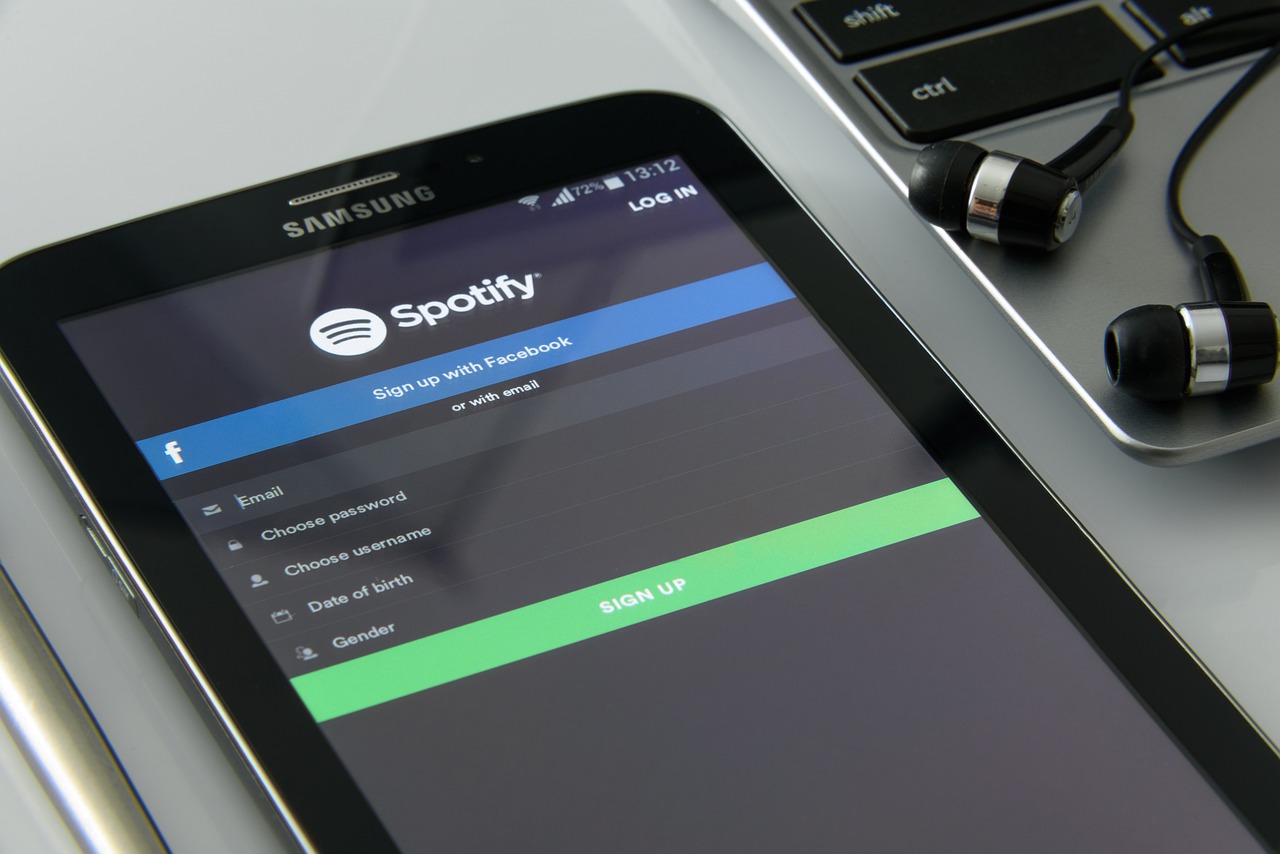Spotify’s Silent Shift: The Future of Ambient Audio

September 13, 2023
Spotify, the leading audio streaming platform, has recently made headlines with its decision to curtail certain advertising privileges for white noise podcasters. Let’s dive into the matter.
Background
What are White Noise Podcasts?
White noise podcasts are a subset of ambient noise broadcasts that focus on producing and looping calming and consistent sounds. These sounds can range from the gentle patter of rain, the rhythmic crashing of ocean waves, to the soft hum of a fan or static. Unlike traditional podcasts that rely on verbal content, narratives, or interviews, white noise podcasts are primarily non-verbal, offering a continuous stream of soothing sounds.
Over the past few years, the demand for white noise podcasts has surged. With the increasing stresses of modern life, many individuals have turned to these podcasts as a tool for relaxation, meditation, focus, and even sleep aid. The consistent and predictable nature of white noise has been found to mask disruptive background noises, making it easier for listeners to concentrate or drift off to sleep.
Why Spotify?
Spotify, being one of the world’s leading audio streaming platforms, became a popular hub for white noise podcasters and listeners alike. Its user-friendly interface, vast library, and personalized recommendations made it a go-to platform for those seeking white-noise content. As more users began to discover the benefits of white noise, podcasters saw an opportunity to cater to this niche yet growing audience on Spotify.
Given the platform’s monetization options, many white-noise podcasters were able to generate significant revenue. With the ability to insert ads into their broadcasts, they found a lucrative avenue, especially as their listener base grew. However, the nature of white noise podcasts meant that many listeners played these sounds in the background, often for extended periods, leading to high streaming hours but potentially lower engagement with inserted ads.
New Spotify Update: Exciting Changes Coming Soon!
The Controversy
The popularity of white noise podcasts brought them under Spotify’s radar, especially when considering the platform’s advertising model. With millions of hours streamed daily, these podcasts were consuming a significant portion of Spotify’s resources. Yet, the question arose: Were the ads played during these podcasts effective, given the passive listening behavior of the audience?
The Decision
A Financial Move
At the heart of Spotify’s decision to pull select advertising privileges for white noise podcasts was a financial motivation. The company, always on the lookout for optimizing its revenue streams and ensuring profitability, identified these podcasts as a potential area where advertising dollars were not yielding the desired returns.
Before arriving at this decision, Spotify conducted an in-depth internal analysis. The findings were eye-opening: white noise broadcasts were costing the streaming giant an estimated $38 million in annual profit. Such a significant financial impact could not be ignored, prompting the company to reevaluate its advertising strategy for these podcasts.
Central to this decision was Spotify’s “Ambassador Ads” program. Under this initiative, podcast hosts received payments to read ads for Spotify during their shows. It was a win-win situation: Spotify got to promote its services, and podcasters earned revenue. However, the effectiveness of this program came under scrutiny when applied to white-noise podcasts.
Why White Noise Podcasts Were Different
The unique nature of white noise podcasts presented a challenge. Unlike traditional podcasts where listeners are actively engaged in content, white noise podcasts are often played as background noise. This passive listening meant that many users might not be actively paying attention to or engaging with the ads, rendering them less effective. An anonymous source revealed to Bloomberg that the marketing money spent on these ads was not considered “well spent” by Spotify.
Recognizing this disparity, Spotify decided to limit advertising support specifically for white noise podcasts. Starting from October 1, these podcasters would no longer be eligible to earn from the “Ambassador Ads” program. This was a significant shift, given that many white noise podcasters had come to rely on this program as a primary source of revenue.
While the decision was primarily a business move for Spotify, it did not come without feedback. Some podcasters expressed concerns about the sudden change, while others understood Spotify’s position. The broader podcasting community also took note, as this decision highlighted the challenges and nuances of advertising in the evolving world of digital audio content.
The Implications
Immediate Impacts
One of the most immediate implications of Spotify’s decision was the potential loss of revenue for white noise podcasters. The “Ambassador Ads” program had been a significant source of income for many, and its discontinuation meant that these podcasters had to rethink their monetization strategies.
From a listener’s perspective, the decision could lead to a more uninterrupted listening experience. Without the insertion of ads, users could enjoy continuous ambient sounds without any disruptions. This could enhance the overall user experience, especially for those who use white noise podcasts for meditation, relaxation, or sleep.
Redefining Value and Engagement
Spotify’s decision brought to the forefront a crucial question about the nature of engagement in the digital audio space. Traditional metrics might not apply to non-verbal content like white noise podcasts. This decision underscored the need for platforms and creators to redefine what engagement means and how it’s measured, especially in niche podcasting categories.
While the “Ambassador Ads” program was off the table, white noise podcasters were not entirely left in the lurch. They could still earn revenue from subscribers, listener support, and automated ads. This situation could encourage podcasters to explore and innovate new ways of monetizing their content, such as premium soundscapes, collaborations, or listener donations.
Spotify’s decision to increase the entry requirements for the Ambassador Ads program—from 100 to 1,000 unique users over a 60-day period—meant that newer or smaller podcasters would face a higher threshold to access advertising opportunities. This move could encourage podcasters to focus more on content quality, listener engagement, and community-building to meet these criteria.
Broader Industry Repercussions
Spotify’s move could set a precedent for other platforms and advertisers to reevaluate their advertising strategies for niche content categories. It highlighted the importance of ensuring that advertising dollars are spent effectively and that there’s a tangible return on investment.
While the decision was a business move, it also emphasized the importance of transparent communication between platforms and content creators. Ensuring that changes are communicated effectively and that creators have the resources and support they need to adapt is crucial for maintaining a healthy ecosystem.
The Way Forward
Diversifying Monetization Strategies for Podcasters
With the “Ambassador Ads” program no longer an option for white noise podcasters, there’s a pressing need to explore alternative revenue streams. This could include:
- Listener Donations: Platforms like Patreon or Buy Me a Coffee allow creators to receive direct support from their audience.
- Premium Content: Offering exclusive soundscapes or enhanced audio experiences for a subscription fee.
- Merchandising: Selling branded merchandise or collaborating with other brands for limited edition products.
- Enhanced Analytics and Engagement Metrics: To better understand listener behavior, especially for non-traditional content like white noise podcasts, there’s a potential for platforms like Spotify to offer more detailed analytics. This could help podcasters tailor their content and monetization strategies more effectively.
Collaborative Opportunities and Innovations
- Enhanced Analytics and Engagement Metrics: To better understand listener behavior, especially for non-traditional content like white noise podcasts, there’s a potential for platforms like Spotify to offer more detailed analytics. This could help podcasters tailor their content and monetization strategies more effectively.
- Collaborative Opportunities: White noise podcasters could explore collaborations with other content creators, such as meditation guides or sleep therapists, to produce combined content that offers both ambient sounds and guided sessions.
- Platform Innovations: Spotify and other platforms might consider introducing new features tailored for ambient content. This could include sleep timers, sound mixing tools, or mood-based playlists that combine white noise with soft music.
- Community Building: Engaging directly with listeners can offer invaluable feedback and foster loyalty. White noise podcasters could host live sessions, Q&A forums, or even sound creation workshops to engage with their community.
- Education and Workshops: Given the therapeutic benefits of white noise, podcasters could collaborate with educational institutions or corporate organizations to offer workshops on relaxation, focus, and the benefits of ambient sounds.
- Advocacy and Industry Standards: The podcasting community could come together to advocate for industry standards specific to their niche. This could involve creating a guild or association to represent their interests and liaise with platforms and advertisers.
- Feedback Loops with Platforms: Open channels of communication between content creators and platforms like Spotify are crucial. Regular feedback sessions can ensure that both parties align in their goals and can adapt to changes in the industry.
- Exploring Other Platforms: While Spotify is a major player, it’s not the only platform out there. Podcasters could consider diversifying their presence across multiple platforms to reduce dependency on any single one.
Spotify: Tips for Getting the Most Out
Conclusion
Spotify’s decision to limit advertising for white noise podcasters underscores the platform’s commitment to optimizing its profit margins and ensuring effective ad placements. While this move might impact the revenue streams of white noise podcasters, it also highlights the evolving dynamics of the podcasting industry.








